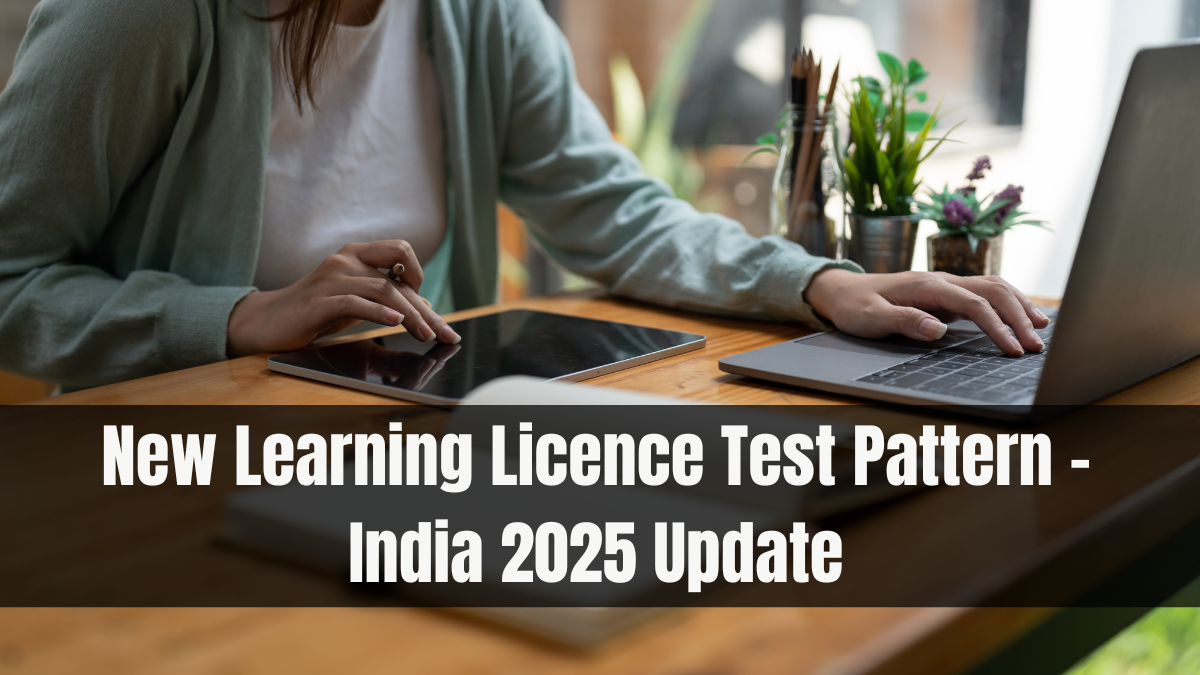The process of obtaining a Learner’s Licence (LL) in India has undergone a major transformation in 2025. In an effort to standardize and digitize the driving licence system across the country, the Ministry of Road Transport and Highways (MoRTH) has rolled out a new LL test pattern under the updated LL test rules India 2025.
This revision aims to simplify the test-taking experience while ensuring that all applicants are well-versed in basic traffic rules, road safety, and vehicle control.

What’s New in the 2025 LL Test Rules?
The biggest shift introduced in 2025 is the fully online LL test system available in most states. Candidates can now appear for the learner’s licence test from home or at designated Aadhaar-authenticated kiosks.
Key changes include:
-
AI-proctored online LL tests via smartphone or computer
-
Uniform question sets across all states
-
Mandatory video-based safety modules before the test
-
Integration with DigiLocker for automatic certificate storage
These updates help reduce human intervention, prevent fraud, and encourage safe driving habits from the start.
Step-by-Step Guide to Apply for LL Test in 2025
Here’s how the new process works under the LL test rules India 2025:
-
Click on “Apply for Learner Licence”
-
Fill out your personal details and upload documents
-
Complete the pre-test learning video module (mandatory)
-
Select your test mode: home-based or center-based
-
Pay the application fee online
-
Appear for the test (multiple-choice questions)
-
Results are displayed instantly; certificate is sent to DigiLocker
Key Features of the New LL Test
-
Test Duration: 10 minutes
-
Total Questions: 15
-
Minimum Score to Pass: 12 correct answers
-
Mode: Online (AI-proctored or supervised at RTO)
-
Languages: Available in 22 regional languages + English and Hindi
-
Auto-submit system: If time runs out, system auto-submits answers
Sample Topics Covered in the LL Test
-
Road signs and their meanings
-
Speed limits and safe distance
-
Emergency vehicle right-of-way rules
-
Traffic signals and lane discipline
-
Drunk driving consequences
-
Pedestrian and cyclist rules
-
Defensive driving basics
Here’s a breakdown of the types of questions you may encounter:
| Category | Approx. No. of Questions |
|---|---|
| Road Signs | 4–5 |
| Driving Ethics & Safety | 3–4 |
| Vehicle Control Basics | 2–3 |
| Rules & Penalties | 3–4 |
Documents Required for LL Application in 2025
Make sure to keep the following ready:
-
Aadhaar Card (mandatory for eKYC)
-
Age proof (birth certificate, passport, etc.)
-
Address proof (utility bill, voter ID, etc.)
-
Passport-size photograph
-
Signature (digital or scanned)
-
Parent/guardian consent for minors (age <18)
You must also link your DigiLocker account during the process to receive your digital LL copy.
Benefits of the 2025 LL Test Reforms
-
Zero paperwork – fully online process
-
Faster issuance of Learner’s Licence
-
Consistent question sets nationwide
-
Encourages self-learning via pre-test videos
-
Test results linked with DigiLocker & Parivahan
-
Safe and secure test attempts through AI-proctoring
This system not only reduces RTO burden but also enhances transparency and fairness.
FAQs
Can I take the LL test from home in 2025?
Yes, most states now allow home-based LL tests using AI proctoring through webcam or mobile.
What happens if I fail the LL test?
You can reapply after 7 days by paying the retest fee. The learning module must be repeated.
Is Aadhaar mandatory for LL application in 2025?
Yes, Aadhaar-based eKYC is compulsory under the new rules to verify identity and reduce fraud.
How do I get the LL certificate?
Once you pass, your Learner’s Licence is issued digitally and sent directly to your DigiLocker.
What if I have no internet access?
You can still take the LL test at authorized RTO kiosks or driving schools with supervised systems.
